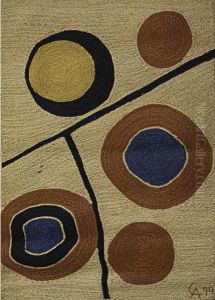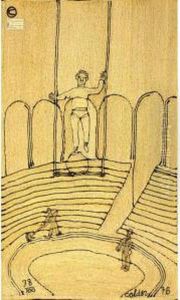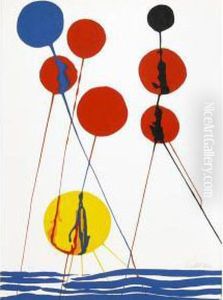Alexander Stirling Calder Paintings
Alexander Stirling Calder was a prominent American sculptor born on January 11, 1870, in Philadelphia, Pennsylvania. Coming from a family with a rich artistic lineage, Calder was the son of sculptor Alexander Milne Calder and the father of Alexander Calder, who would become one of the most influential sculptors of the 20th century, particularly known for inventing the mobile. This generational continuum of artists significantly contributed to the American art scene over decades.
Calder initially studied at the Pennsylvania Academy of the Fine Arts in Philadelphia before furthering his education abroad. He honed his skills in Paris at the Académie Julian, immersing himself in the vibrant European art scene of the late 19th and early 20th centuries, which greatly influenced his artistic development.
Upon returning to the United States, Calder quickly established himself as a significant figure in American sculpture. His work was characterized by its classical style and often depicted historical figures or allegorical themes. He was adept at both monumental sculptures and smaller, more intimate pieces. Calder's public monuments and architectural sculptures adorn many American cities, blending seamlessly with the urban landscapes.
One of Calder's most notable contributions was his work for the Panama-Pacific International Exposition held in San Francisco in 1915. For this event, he created numerous sculptures that showcased his skill in working with large-scale pieces and his ability to capture the dynamic spirit of early 20th-century America.
Throughout his career, Calder received numerous awards and honors, reflecting his status as a leading sculptor of his time. His works continue to be celebrated for their craftsmanship and artistic merit, and his influence is evident in the evolution of American sculpture.
Calder passed away on January 7, 1945, in New York City, leaving behind a legacy that not only encompasses his own vast body of work but also the artistic contributions of his descendants. His life and career are a testament to the enduring power of artistic expression and the important role that art plays in reflecting and shaping cultural values.
















